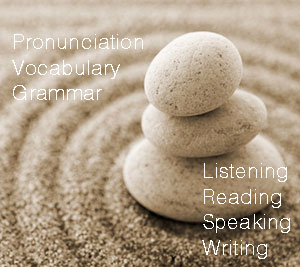 When I studied linguistics at University, we had a great deal of lessons on English grammar. I remember a boring thick textbook with lots of rules we had to memorise and then retell our professor. The chapter on articles: “a, an and the” was extremely hard to understand: it had so many rules and even more exceptions.
When I studied linguistics at University, we had a great deal of lessons on English grammar. I remember a boring thick textbook with lots of rules we had to memorise and then retell our professor. The chapter on articles: “a, an and the” was extremely hard to understand: it had so many rules and even more exceptions.
After graduation, I took some time to revise English grammar using various textbooks published in the UK. I also found out that my mind can remember only the things that: 1) are important 2) I understood completely.
Articles are important. Many linguists believe that it is easy to test a person’s level of English just checking how skilfully he or she uses articles, phrasal verbs and idioms. In addition, articles can change the entire meaning of the word. For example, Sherlock Holmes always referred to Irene Adler under the honourable title of “the woman”, meaning that she was exceptional.
In this .pdf file I collected and structured different rules on the indefinite, definite and zero article (a, an, the and “no article”) trying to put them as clearly and logically as possible. Take your time to read it thoughtfully several times.
Now I’d like to share a few hints how you could not only memorise those rules, but also understand them deeper.
1) Try to figure out the logic
The indefinite article “a and an” came from an Old English word “one“. That is why it can’t be used with plural or uncountable nouns.
The definite article came from an Old English word “that“, therefore we can use it when both the speaker and the listener understand what exactly is meant.
The definite article is required with ordinal numerals, but zero article should be used in combination noun+cardinal numeral, e.g. Let’s go to the fifth Gate. BUT Let’s go to Gate 5.
2) Search patterns and group similar rules
Many geographical notions are used without any article when they mean one object (countries, cities, lakes, mounts, islands), but with definite article when they mean groups (the USA, the Great Lakes, the Andes, the Caribbean).
3) Use associations
Some public places must be used with the definite article (museum, theatre, cinema, park, hotel, station, airport).
But others should be used with no article (school, college, university, church, hospital, prison).
I used the association technique to remember them: the first group goes under the category of entertainment and travel, whilst the second one is associated with regular visits and something people do not necessarily wish. E.g., we can say: David goes to church on Sundays. BUT: David went to the theatre on Saturday.
4) Search unusual rules
Public places like airports and stations are used with the definite article, whereas kinds of transport are used with the zero article (go by bus, go by train). Isn’t it interesting? You can go to the railway station and then travel by train.
5) Create stories and remember them
I went to work by taxi. In the afternoon I had lunch, then I went home by bus. At home, I browsed the Internet for a while and then went to bed.
6) Find short poems and songs in the Internet
Beans for breakfast.
Beans for lunch.
Beans for dinner.
Beans for brunch.
Beans for snacks
and all desserts.
Beans until your
stomach hurts.
Early to bed and early to rise makes a man healthy, wealthy and wise.
You can also find some songs for kids and use them to remember the articles.
This is the way we go to school, go to school, go to school
This is the way we go to school so early in the morning
7) Use images
I use this technique to remember that we should use the names of canals, rivers, seas and oceans with the definite article. I just imagine how canals flow into rivers, rivers flow into seas and seas are connected with oceans.
Lakes do not flow anywhere and are used without articles.
The same way I remembered forests and deserts, which are also used with the definite article. I imagined a place with many trees (a forest) and a place with no trees (a desert).
8) Create vocabulary cards with collocations and examples
You can create simple cardboard cards with collocations and highlight the article used in a different colour.
in the morning
I have breakfast in the morning
on Monday
I worked on Monday
Then write a translation to your language on the opposite side of the card and try just to learn the cards as vocabulary.
9) Practice speaking and writing
Experienced teachers will correct your mistakes tactfully and will give you a couple of phrases to revise each particular rule. The more you practice and analyse your mistakes, the sooner you will improve.
You can also take a quiz on articles to check how well you understood the rules.
 Русский
Русский English
English



